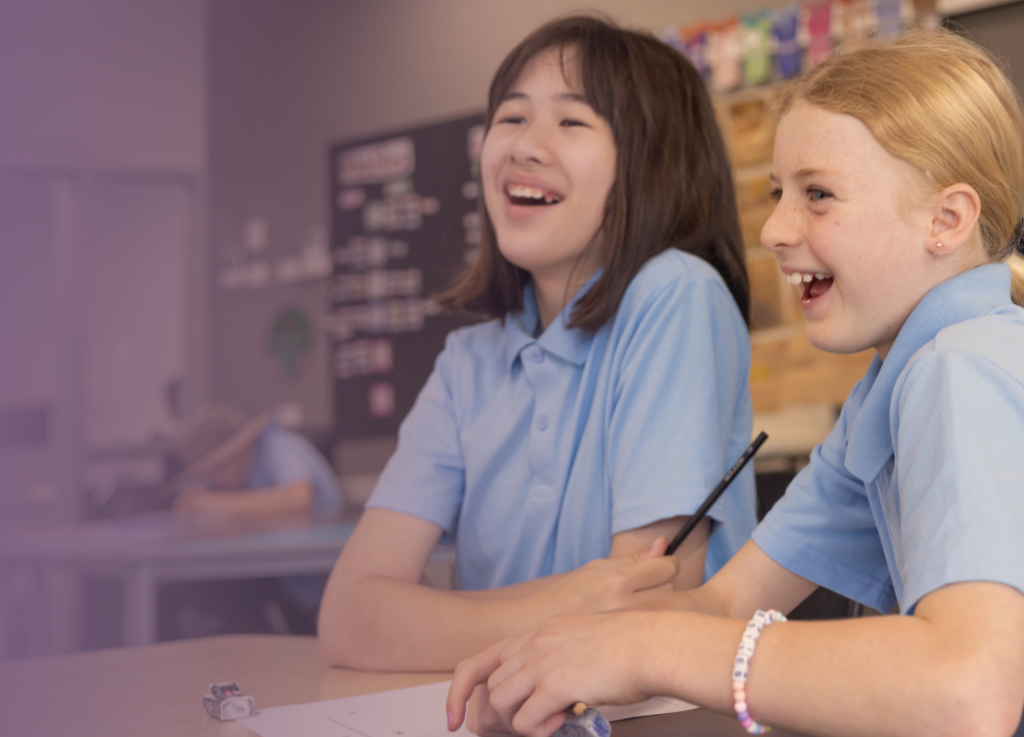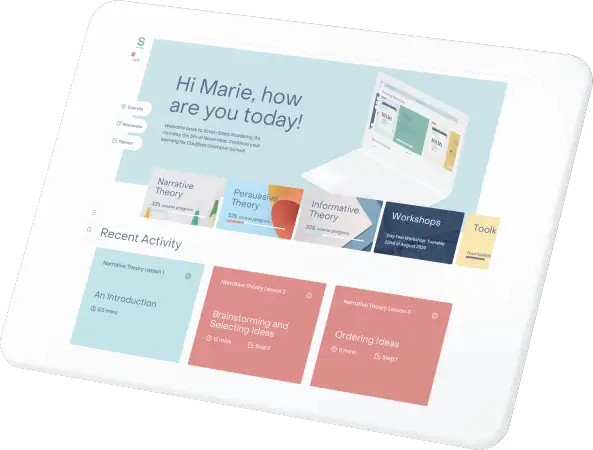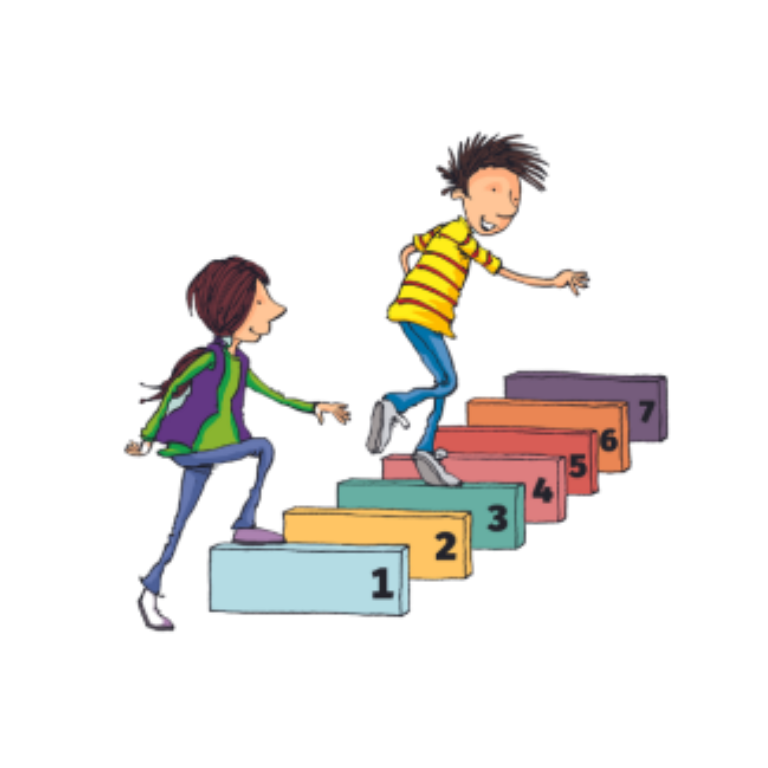‘My students are still learning to grip a pencil,’ say some lower-primary teachers, ‘so how could we possibly use the Seven Steps?’
Other teachers of Prep or Foundation rave about what a difference Seven Steps has made for their students.
Are they living in different worlds?
Of course not. The difference is in how you think about writing skills for your students.
We always say in our workshops that one of the key secrets behind the Seven Steps is ‘verbal is vital’. So is ‘think first, write second.’ Neither of these require expert penmanship, or even a pen at all. They’re all about how you use your brain.
Think first, write second
Pre-writers and students who are starting out with the formation of letters and words still have thoughts and ideas to express, just like anyone else.
Often these ideas come out in imaginative play, drawings, drama and song. They make up characters, tell stories using toys or random objects, and repeat facts about things that fascinate them – sometimes over and over again!
These activities are not irrelevant to writing – in fact, they are the basis of thinking like a writer. Students are learning how to develop plots by sequencing imaginary events, and they’re capturing facts that they want to communicate to you. (Yes, you’re going to hear all about the Tyrannosaurus Rex today.)
Pre-writers or beginner writers still have a drive to communicate. We can build on that drive in whatever form it appears.

Think like a writer
When we say we’re teaching students to ‘think like a writer’, we are referring to the steps and decisions an author makes:
- generating ideas
- choosing which ideas to keep and which ones to cut
- sequencing those ideas in a way that will engage a reader
- crafting a beginning and ending to grab and hold the reader’s attention.

Verbal is vital
As with all of the Seven Steps, practise in small bites in a safe, supportive environment. Try different activities that involve oral language, brainstorming and sequencing.
Five lower primary/beginner writer activities that set students up for writing success
1. Play guessing games that require deduction.
Show up one day wearing a scarf and mittens. Ask the class what might be happening; why might I need these? On another day make it a football scarf or a pair of oven gloves or gardening gloves – ask again. This trains students to think, and to think of variations – a great skill for generating ideas. (Step 1: Plan for Success)
2. Change it up.
Take a familiar story such as The Three Little Pigs, and ask students what would happen if you changed the pigs to three koalas or kangaroos. What would change in the story? Would the characters behave differently? (Step 1: Plan for Success)

3. Sound out starts.
Play a sound and ask students how they could use it as the opening sound for a story, or a mini-movie, and what the story would be about. Celebrate the different ideas that emerge for the same sound – ‘Beep! Beep!’ doesn’t always need to be a car horn honking in traffic. It could be an alarm clock, or an incoming text, or the timer telling us cookies are ready! (Step 2: Sizzling Starts)
4. Round-robin stories.
Write silly stories in a circle, in which each person comes up with an idea and finishes with ‘and then …’ At first these will sound like long and boring lists, but the more often you do this, the more likely it is that someone will make up a comic or tense transition, and before you know it, they’re all Tightening the Tension. (Step 3: Tightening Tension)
5. Focus on body language.
Act out two versions of the same dialogue, asking students to tell you what is happening based on your body language, voice and intonation. Try phrases that could be read more than one way, such as ‘It’s all mine!’, ‘It’s starting!’ or ‘We’re going home’. You could also try this exercise with photos. (Step 4: Dynamic Dialogue and Step 5: Show, Don’t Tell)

‘I’m going home’.

‘I’m going home’.
These are just five ideas that employ the power of oral language! We can use them to teach students how to generate ideas, choose and sequence them, and create tension in a simple narrative.
Do them in a fast and fun session. It doesn’t need to be long! Share ideas and successes. The benefit really comes when you repeat these activities, so don’t give up too soon. Repetition allows time for innovation to emerge.
Solid foundations
Even before they are writing, students who engage in oral literacy are building the skills and mindset that they will need as they become writers.
For more ideas on how to use reading, speaking, drawing and writing in ways that support beginner writers, check out our new online session Applying the Seven Steps with Beginner Writers, as well as the Early Years Writing Manual.

Step 2: Sizzling Starts is fun to teach, easy to learn and will have your students cheering for more!


